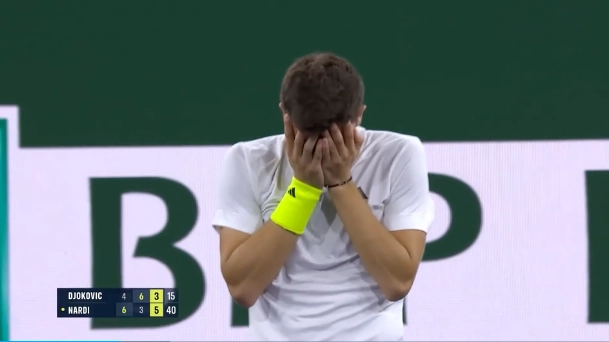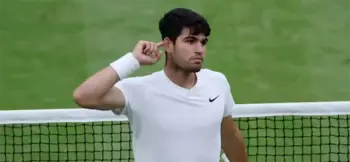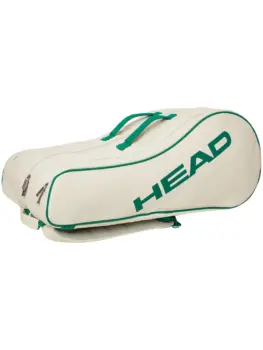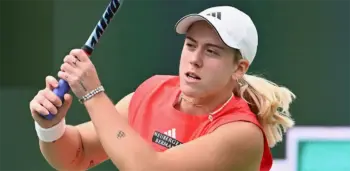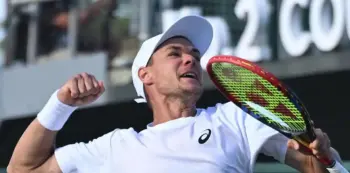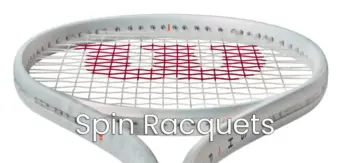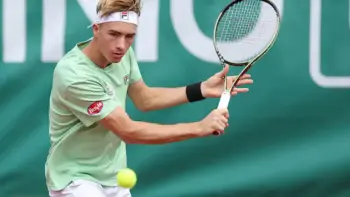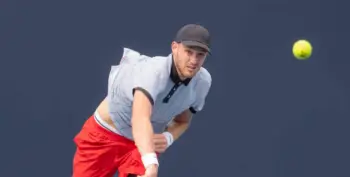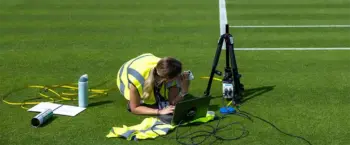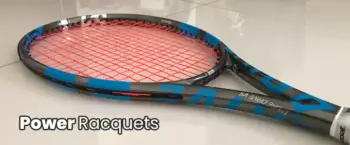There a few common mistakes by club players that I see over and over again in my coaching career. Do you recognize these from your own tennis?
Evan Gaudreau is back with some common mistakes by club players and some ideas on how to fix and improve.
One of the biggest mistakes by recreational tennis players is…
One of the biggest mistakes that club players make has less to do with technique and more to do with how they play their points (this mistake happens at all levels, from club players to juniors, to college players, and throughout the pro levels).
It is sustainability.
The lower-ranked the player, the less they can sustain a rally from point to point. There is a bigger gap between the good points from the bad points.
This is what creates “pushers.”
Players learn to focus less on technique and more on getting the ball back over the net in any way possible, which is fine, but it has its limitations.
This is also why we see club players get stuck at a certain level that they cannot move past (which is also fine because in the end we are trying to find our own competitive level to compete at that brings us highs and lows and a reason to keep coming back to the court).
The problem that comes up at all levels is if we spend too much time focused on one area and we “seal” it emotionally through matches, it’s hard to change. It’s like a 9 to 5 job that locks us into where we are for the next 30 years.
As a young player, when I came back to the indoor club in the Fall, I was confused as I watched the club players. Each year, I saw the same mistakes and wondered why I was improving while they stayed where they were. Sustainability comes from different training techniques.
You can do drills based on consistency (but how many times have we felt good in practice only to find it all fall apart in the match?). We can play more matches and points and “let the chips fall where they may,” but that takes much time.
Half-court games have value but also downsides
Half-court games have value for club players. I had previously written that players should stop playing 21s and change the score to regular game scores and play a “set” crosscourt. But, that works better for college level and above when you are trying to re-program the way you process how you play points during the match. 21’s have value in that they are long, and they allow you to recognize the value in sustaining longer points. If you play too many 21s, it will create a “player” that focuses too much on just getting balls back.
One thing I tell the juniors to focus on is a number while they’re playing half-court games (when they focus on the score, it becomes too distracting in a lot of ways and creates a ceiling you cannot get past). I tell them to start with a number like 5. You will be doing okay if you can sustain five shots per point. You might not win, but you won’t be giving too many points away. If you run into a better player (or it’s not working), move the number up to 7, or 9. Focusing on numbers changes the player from emotional to more of a machine. It takes emotion from the equation and allows the mind to relax because now you have a PLAN.
Fed balls or ball machine drills
Focus on hitting a particular shot or area and see how many shots you can hit the spot in a row. I watch too many ball machiners just hitting randomly and not “sealing” what they are trying to learn. This aspect is disappearing more among junior players. Repetition is boring for them. They need constant stimulation and cannot focus past a certain point. They don’t know what it’s like to put the work in. I had an epiphany last fall. I spoke to the players I worked with and asked them why they get so cranky on the court when they miss shots. They didn’t know why. I finally compared how they process their school work and use that mentality on the tennis court, meaning they think if they “put in the work,” they would get fast results. I said they are two different things. Being “book smart” has nothing to do with being a good tennis player. They EXPECTED results, but they lacked ingenuity. They often need to be told (Coddled) that they are doing something right because that’s how their world is.
In the tennis world (and in competition) wins provide the answers if you are doing something right or wrong. And YOU have to see what can be adjusted. You cannot always look for help. At some point, you have to “cut the umbilical cord.”
Being self-aware and accepting the process
Accepting things for what they are and not what they are not. This attitude will up you a level. You cannot dwell on the past (most of us) if we want to improve. Recognizing your physical limitations can “Hurt your feelings” but the mind can always improve. How you process can always get better (the hard part is having the time to step back and process what is happening. I call it “Living in the fog.” I was reprimanded for not changing certain things in marriage, but it’s hard to change when you are “In it” 24/7. If I was away for a weekend for a college match, away from the family, it allowed me to pull away and recognize a few things that might need at least a “look at.” But, like tennis, bad habits worsen over time and are hard to correct.
Variety in playing partners
One of the most common mistakes by club players is that they always play with the same guy. Find new players to play with. Everyone wants to hit with better players. Sometimes, the better players don’t want to hit with them. Sometimes, getting what you want might cost a few bucks—a lesson (which may not get you what you want and kill your wallet). I currently have an adult player who is “paying” for another player’s court time. In the end, he will get better faster and it will cost him a few bucks. It also helps me because I see the improvements in his game after a few months (he was playing with a group of guys who were staying stagnant). In a way, some players can “bring you down” or “hold you back.” You need to find new players with different game styles and challenges.
Watch the swing, not only the ball
Don’t feel the need to “Watch the ball” so much. You become like a dog chasing a stick. “THE BALL TELLS YOU NOTHING,” I say to the players I teach. “THE OPPONENT’S SWING TELLS YOU WHATS COMING.” I see club players focus too much on the ball (I hear the coaches hammer that home). It’s frustrating. I see a lot of club players getting stuck in doubles with a poached ball because they are focusing on the ball and not the poacher. FYI. When you are playing doubles and you are the UP player at the net, your priority is the other net player (unless they are a stick and don’t move much).
See the court
When players have a discrepancy on the return, they generally have the same issue during baseline points. I made my player watch and showed her the “Hard stamp” the player had when he moved to his one-handed backhand. Those generally hit the ball down the line and have a hard time getting the ball crosscourt. So, they are what I call a “Line cover.” Passing shots. Baseline shots. The fun part is taking them down the line and making them uncomfortable doing something different (Against these players, there are so many manipulations to take the line away and make their technical beat themselves).
Chart your matches
Have someone chart one of your matches and the only notes they take are rally length and who won the point. You’ll start seeing a pattern.
Three points in a row
Lastly, coaches, I started messing around with games designed to win three points in a row. What I’ve been noticing in myself is the amount of drifting my mind does. I noticed a different feeling. My alert button has been on “Off” for too long. When we play regular points, we know we can adjust and “win” at least one out of every three. But, when I played service points with my daughter last night, I had lapses in concentration and then a “wake-up call.” That said, “She has two; don’t let her win three.” I will probably start using “Threes” in points more often. I’ll probably have some variations coming to it. The one way will get old after a while, and you will have to sprinkle in new variations on how to win three in a row. I started thinking about this because of the 0-40 games in which the top players come back and win.
Playing games starting at 0-40 is fine and has some value to a point…but I find that playing games having to win three in a row has more value at certain points in the training (You have to win three points in a row to get a point. Play to 6 or whatever). From a coaching perspective, it has two values. It takes a lot of time to play, so it can “eat time” during the clinics (which isn’t bad) because it allows time for the player to develop winning concepts. It allows them to process. I see too many clinics that are schizophrenic. They jump around to new things too quickly and never develop the concept they are working on. Generally speaking, players need 35-45 minutes of a concept weekly to put it into action. If they get under 25 minutes, it goes away, and you are doing the same thing next week.
Summary
These are some common mistakes by club players that I see around the courts. What are you struggling with or working on? Are you frustrated by lack of progress or are you making strides?
You can read more of Evan’s writing and get a lesson at Maverick Tennis.
